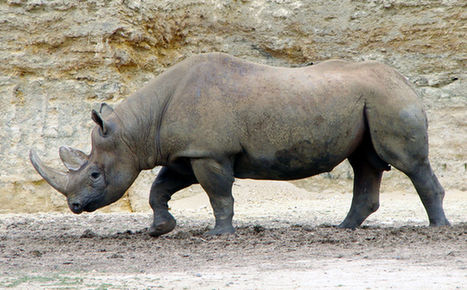KWS launches conservation strategy for Black Rhino in Kenya
 0 Comment(s)
0 Comment(s) Print
Print E-mail Xinhua, September 24, 2012
E-mail Xinhua, September 24, 2012
 |
|
The Black Rhino. [File photo] |
Kenya Wildlife Service (KWS) has launched a five-year conservation and management strategy for the black rhino in the East African nation.
The strategy to be managed from 2012-2016 is the fifth edition of its kind of the Rhino Strategic Plan which re-focuses efforts on rhino conservation despite the ever increasing challenges.
"The strategy defines a revised overall goal of conserving at least 750 black rhinos by the end of 2016, achieving at least a 5 percent national growth rate with less than one per-cent man- induced and disease-related deaths," KWS Chairman Davis Mwiraria said in a statement received on Monday.
Kenya has intensified its anti-poaching efforts by increasing the rhino ranger force by more than 25 percent during 2011, converting rhino scouts on private lands into Kenya Police Reservists, offering formal training of community scouts in wildlife protection, using sniffer dogs for monitoring and relocating rhinos from areas of high risk to areas of low risk.
Early this year, the wildlife agency launched a 10-year national elephant conservation and management aimed at protecting largest land animal.
The government initiated the development of the strategy after realizing the need to have a well coordinated approach to deal with emerging challenges of illegal killings of elephant for their ivory as well as the loss of available elephant range resulting from growing human population.
The Black Rhino Strategic Plan has maintained Kenya's vision to conserve at least 2,000 black rhinos in the wild. It places emphasis on: protection and law enforcement, monitoring for management, biological management, population expansion, awareness and public support and coordination and capacity.
These objectives will be coordinated by a steering committee whose main role will be to monitor implementation of the Strategic Plan. Mwiraria lauded the strategy as a great milestone in rhino conservation and management in this country.
KWS Director Julius Kipng'etich assured Kenyans and the world that KWS has put into place all the necessary security measures to protect and conserve the charismatic species.
"KWS has increased the rhino to ranger ratio to 1:2 while in some private ranches such as the Ngulia Sanctuary, the ratio is 1: 1 to ensure maximum protection for the rhinos," Kipng'etich added.
He also gave a stern warning to poachers that KWS would deal severely with them and do what it takes to protect the country's wildlife. It is reported that around 700,000 firearms in the country is in the wrong hands, greatly fuelling the poaching menace.
The African black rhino is currently listed as "critically endangered" on the IUCN Red List.
Over the last 20 years in particular, considerable money and other resources have been expended in several African countries aimed at saving the black rhino from extinction. As a result, the declining trend has been reversed and numbers are slowly increasing.
The East African nation has become a major player in Africa in rhino conservation with the third largest black rhino population after South Africa and Namibia. As at the end of 2011, Kenya had 623 black rhinos while Africa had a total of 4,880 black rhinos.
However, illegal demand for rhino horn resulting in poaching was, and continues to be, the major threat to the existence of all African rhino species.
It is speculated that the increase in poaching results from societal changes in some Asian countries where rhino horn is purported to cure cancer and other diseases.
While scientists have proven that the rhino has no medicinal value, the myths remain putting rhino horns in high demand.






Go to Forum >>0 Comment(s)